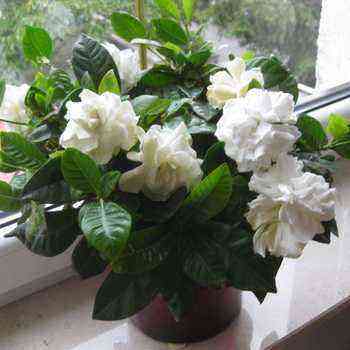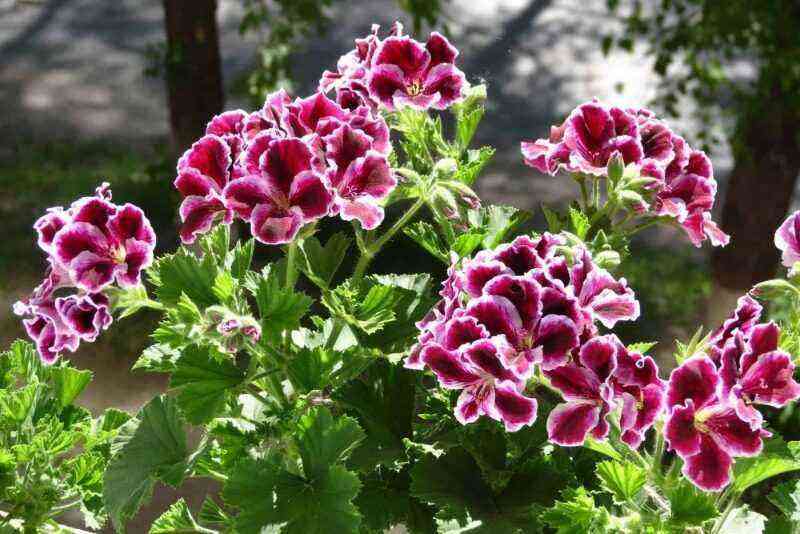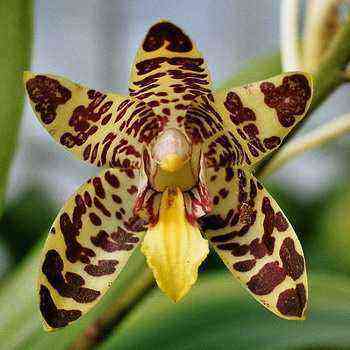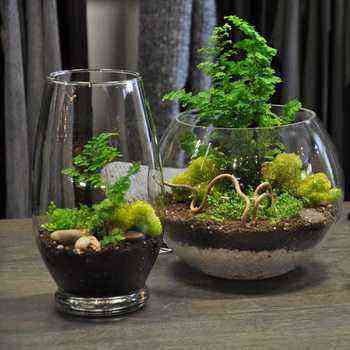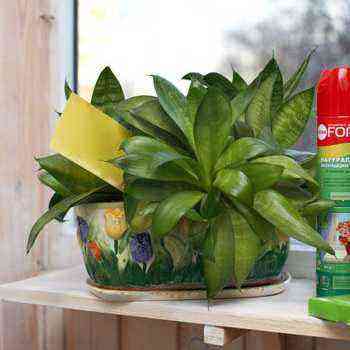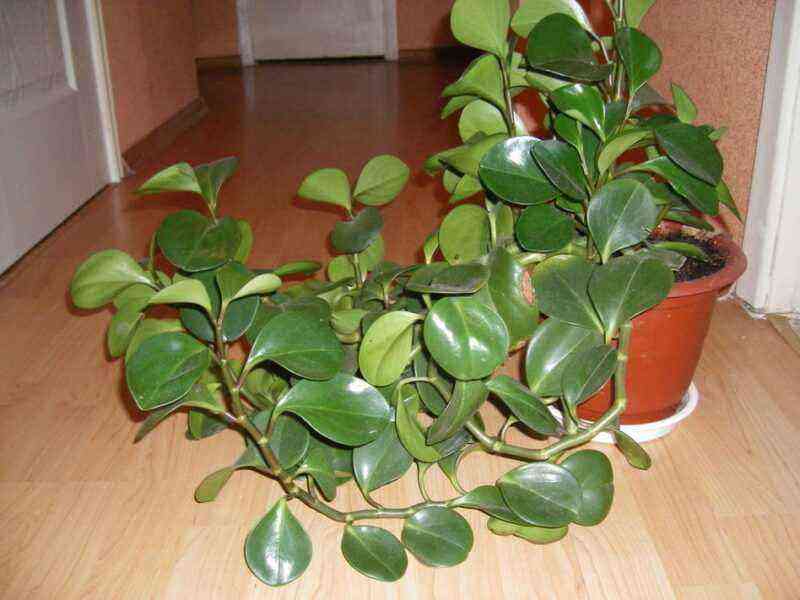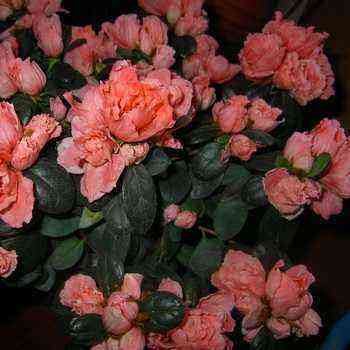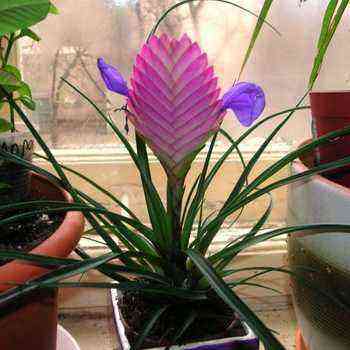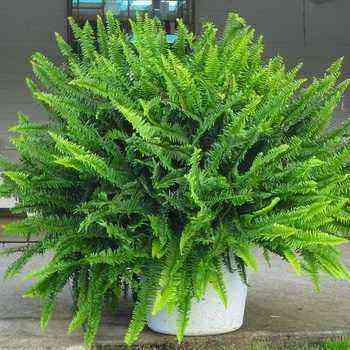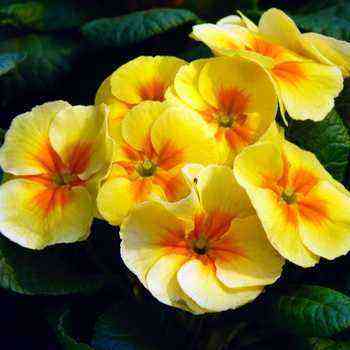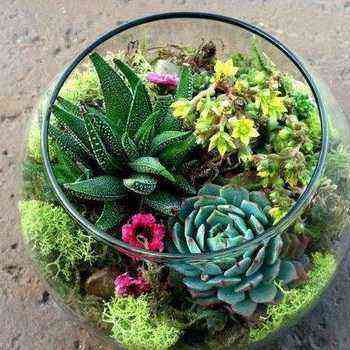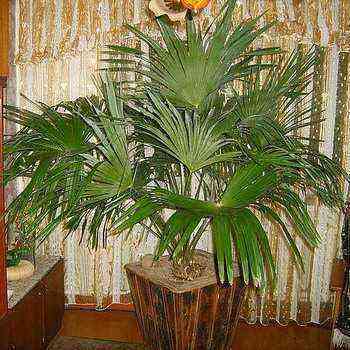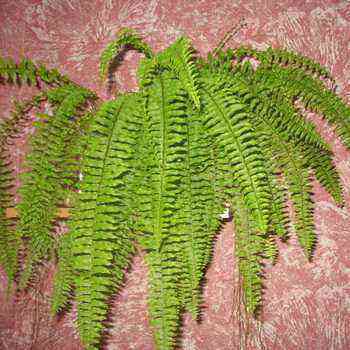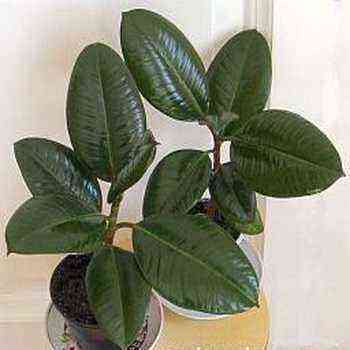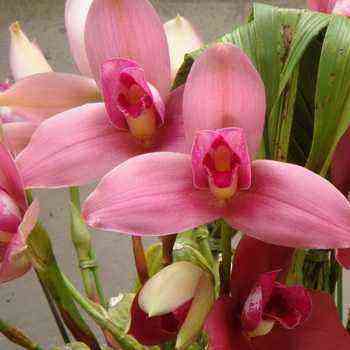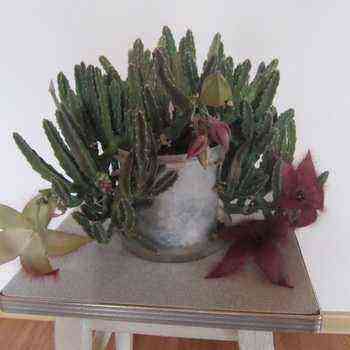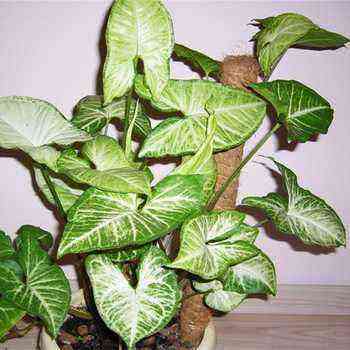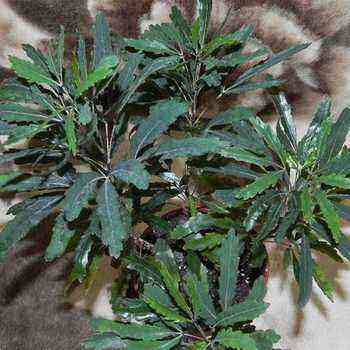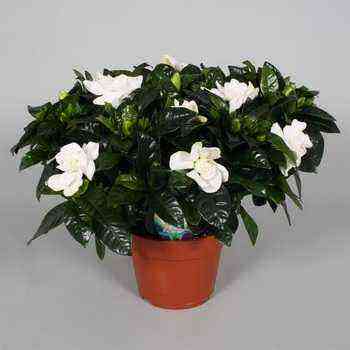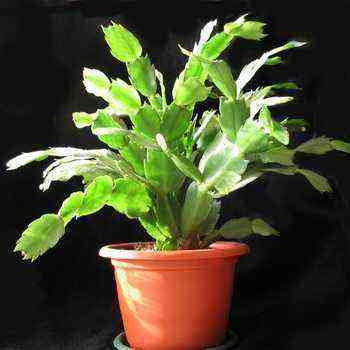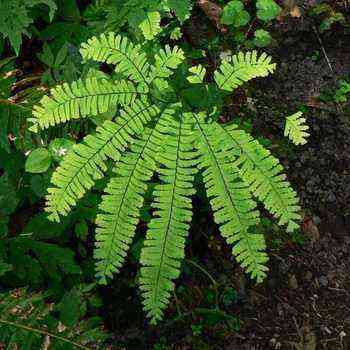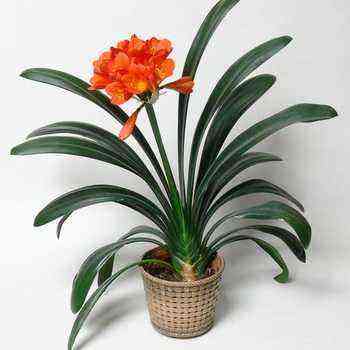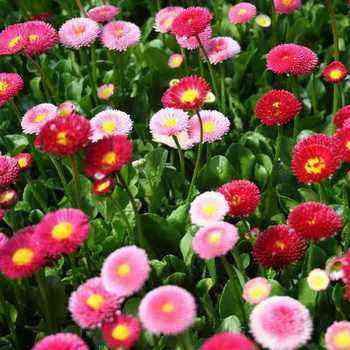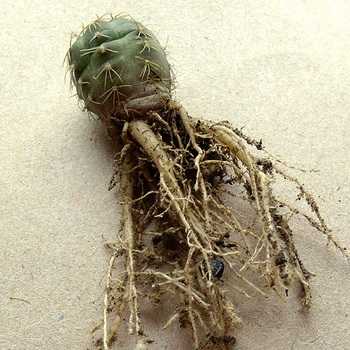
Why does not a cactus grow at home?
Perhaps the most unpleasant thing about succulents is that sooner or later one has to deal with their “sores”, that is, undesirable deviations from normal development (changes in external signs, impaired growth, delayed flowering). Moreover, indoor cacti, despite their generally recognized vitality, get sick especially often and, so to speak, varied. These problems cannot be avoided either by experienced cactus growers, much less novice collectors or simply owners of several plants. However, if the first cacti are more likely to really get sick or are attacked by pests, then for non-specialists, troubles with cacti are usually explained by omissions in caring for plants or simply insufficient knowledge about them.
Non-pathogenic, i.e. not caused by pathogens or pests, external changes in cacti and other succulents can be explained by the influence of a variety of external (exogenous) factors, as well as many genetically predetermined (endogenous) characteristics of the plants themselves. Unfortunately, the external manifestations of lesions by endo- or exogenous diseases are often difficult to distinguish or coincide. For correct diagnosis and assistance to plants, it is necessary to understand all the possible causes of the appearance of external disturbances.
The main reason why cacti die is due to changes caused by external factors. Succulent plants, like all living organisms, can grow and develop normally only under certain external conditions. Inadequacy of these conditions to the needs of succulents is a common cause of their ailments. Compliance with the basic principles and rules of their content will prevent possible troubles. However, even with the most careful care, as in nature, cacti have to go through periods of unfavorable conditions. During these periods, such phenomena as growth arrest, dying off of part of the roots, drying out, wrinkling, discoloration of the stem, discarding of leaves, dying off of part of the shoots are considered quite normal. In its most simplified form, the set of conditions for “normal inhibition” looks like this: low temperature and humidity, low illumination (accordingly, for normal growth according to this – rough! – scheme, high temperature, moisture, primarily of the substrate, increased illumination are required).
Why does a cactus rot in a pot at home?
Errors in care inevitably lead to abnormalities in the growth and development of cacti. The most common reason a cactus rots in a pot is moisture in low light. At low temperatures, the plant is simply unable to assimilate water, dead roots easily rot, and decay soon takes over living tissues.
At elevated temperatures in conditions of insufficient lighting, moisture leads to abnormal growth (in cacti, these are modified spines, ugly stretching of the stem). An increase in temperature or backlighting when kept dry during a dormant period can also cause an untimely start of growth and, as a result, depletion of the plant, the formation of ugly shoots, after-hour buds, which subsequently fall off or regenerate. Insufficient moisture at high temperature and light during the growth period can lead to untimely death of roots, dropping of buds, severe drying of the stem, and a change in its color. This often happens when the earthen coma overheats. To avoid this, the pots are screened, dripped or placed in high-edged trays. Watering with cold water can cause cacti to stop growing.
Also, the reason why a cactus rot is often cited as stress. The problem of stresses in plants is currently being discussed, and their complex mechanisms are not fully understood. However, if the terms “stress” and “shock” are understood broadly, then they can certainly be used in relation to plants, and in particular to cacti and other succulents. The cause of many disorders of their development is gross, stressful changes in conditions.
Knowing why cacti rot at home, try to create decent care and living conditions for succulents.
Why did sunburns or white bloom appear on cacti?
A sharp increase in illumination causes burns in cacti (they can look like spots of unusual color, corking over time), general lightening or reddening of plants. A burn can cause not only sunlight, but also a temperature shock – plants can simply “cook” in a closed greenhouse when critical temperatures are exceeded. It is curious that even the most sun-loving cacti and succulents of the African deserts suffer from sunburn. Protection from burns – gradual accustoming of cacti to full sunlight, shading from overheating – airing the premises and the same shading. If you notice a sunburn at a cactus in time, you can help the plant – remove it for a while in the shade, spray it with water, water it (if the substrate is dry). Strong sunlight suddenly hitting the plant can quickly destroy even a large specimen.
It should be noted that for many cacti, haworthia, and stapelia, color change is a normal reaction to sunlight (redness, browning, blackening, chalky plaque formation, etc.), and the absence of these signs, characteristic of many species, is sometimes perceived as an indicator of a disease is just the result of insufficient lighting.
The reason why a white bloom appeared on the cactus may be transplanting, rearranging, watering, fertilizing. The dying off and rebirth of buds often occur when plants are transplanted or even rearranged. The usual victim of such stresses is Schlumberger (Decembrists). Often, the consequences of even a completely competent transplant can be a growth arrest, a modified growth (different from the previous shape and color of the stem, other thorns and pubescence, a change in the number or merging of ribs). A transplant isn’t just stressful. It is often associated with mechanical damage to the roots (especially in species with thickened, storing roots), as well as with a sharp change in the chemistry of the substrate (for example, pH). The latter, like careless fertilization or heavy and untimely watering, may cause root death, delay or abnormal acceleration of growth. Unusual successful watering or fertilization can cause the stem of a cactus to burst, for example. The straight lines appearing in this case
the crevices are usually deep and do not overgrow, their corking also does not occur. This is how a real gateway for pathogens appears. If such cracks have already appeared, they (after disinfection and drying) can be covered with ordinary garden pitch. The unfavorable consequences of transplanting can be significantly reduced by replacing it with transshipment. For most succulents, with their low metabolic rate and peripheral arrangement of suction roots, it is no less effective than a real transplant, but it is safer.
In general, the discrepancy between the nature of nutrition and the conditions of keeping cacti is an acute problem. The paradox of equally good results in cactus growers who adhere to diametrically opposite methods of growing plants is explained precisely by the wide range of possible combinations of different conditions. But, unfortunately, the range of inconsistencies of these conditions is even higher. Both “overfeeding” and “underfeeding” in different growing conditions can be equally harmful. However, for cacti and most other succulents, the main principle is “it is better to under-supply than to pass.” If you are not sure, it is safer to plant the plant in a smaller container, in a leaner substrate, under-water it, refrain from fertilizing. However, the abuse of this approach among domestic cactus growers quite often turns cacti, as already noted, into real bonsai. Perennial dwarfs grow very slowly, do not form full-fledged thorns and pubescence, bloom poorly or do not bloom at all, do not set seeds. Often too small and shallow dishes simply mechanically prevent the normal development of roots. An overly dense substrate can also be a mechanical obstacle to growth. Bonsai cacti appear to age prematurely and are more vulnerable to disease.
A poor understanding of the purely mechanical principles of growing plants (not only cacti) is not only surprising, but also upsetting. Very often people who planted succulents in beautiful flowerpots without a drainage hole complain about white bloom on cacti.
Why indoor cactus does not bloom in a pot
Often, beginner amateurs wonder why cacti do not bloom at home, although the plants were full of buds when they were purchased. The main factor in why a cactus does not bloom is the age of the plant (including physiological). If a cactus should bloom after 5 years, then it is difficult to expect an earlier flowering. Apparently, the formation of soon dying buds on young plants can also be considered normal – full flowering could dangerously weaken them. The well-known cleistogamy (seed formation without flower opening) of frail is more common in young plants. Cleistogamy, too, should not be considered a disease or an anomaly.
Another common reason why a cactus does not bloom in a pot is a lack of sunlight. The lack of flowers or the death of buds often occurs in South American species that bloom in nature in the spring and summer. A simple backlight can remedy the situation.
Conversely, some cacti originating from the equatorial region do not bloom here due to too long daylight hours in summer. Experts recommend artificially shortening daylight hours for such plants.
Cactus growth disorders
A serious shock is caused in cacti (like in other plants) by a sharp change in the environment – transfer from a room to the open air and, conversely, from greenhouse conditions to indoor conditions. The latter is a common cause of frustration after purchasing cacti grown in greenhouses. A difficult period for plants to get used to new conditions cannot be avoided – with a whole range of possible painful manifestations: dropping of roots and buds, stopping growth, modified growth.
The effect on succulents of a shortage or excess of certain substances, primarily microelements, is hardly noticeable and practically not studied, since cacti are plants with a reduced level of metabolism.
However, in intensively growing species – prickly pears, epiphytic cacti, sedums, agaves – the imbalance of elements is likely to affect. It is possible that some spotting, drying of the ends of the shoots, dropping of shoots, leaves and buds can occur for this very reason. Therefore, the reasonable use of complex fertilizers, especially trace elements, in the culture of all succulent plants is desirable, and for the normal growth of many of them it is necessary.
Cactus growth disorders are associated with nutrition in two more cases. Sometimes they are depleted as a result of too abundant flowering or fruiting. Usually, however, the extra buds dry up, which protects the plant from depletion. In addition, very often the growth of grafted plants is disturbed when the rootstock feeds the scion too intensively or too weakly. It should be remembered that grafting is a forced and radical disturbance in the life of a plant and cannot but cause further deviations from normal development. A self-rooted plant is always “normal” and more durable (under appropriate conditions) than its grafted counterpart. Grafting is a way to maintain the viability of a plant in unusual conditions.
Juicy and fleshy, succulents often suffer from mechanical damage. Their “armament” is largely apparent. The cuticle in most species is rather thin, it is easily damaged, there is practically no tightening of the damage, after which ugly scars remain. Broken thorns in most species of cacti and milkweed do not recover, as well as washed away or worn down pubescence. The saddest thing is that all these traces of neglect in care remain on the plant for many years, and the veteran plant looks hopelessly crippled from an inattentive owner.
It should be borne in mind that the loss of shoots (in prickly pears, mammillaria, Kalanchoe, sempervivum) is often a natural method of vegetative propagation and one has to be especially careful with such plants. In many epiphytic (ripsalis, epiphyllums), creeping and creeping (selenicereus) cacti, breaking off the stems is also quite natural and, apparently, can occur even under the influence of their own gravity.
Genetic changes in cacti
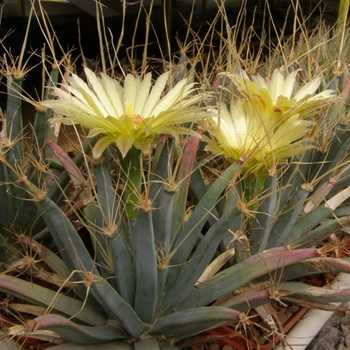
Painful manifestations should also be distinguished from the manifestations of genetic changes in plants. In addition, insufficiently competent cultivation leads to a massive violation of the genetic purity of species, for example, as a result of spontaneous hybridization. Therefore, the absence of characteristic features for the species or the appearance of uncharacteristic ones is not something dangerous for the plant.
The appearance of strange thorns or the absence of some hairs, the deviation of the color of flowers from the “classic”, etc., as a rule, do not give reasons to worry about the health of the plant, but only about its collection value.
When looking closely at the appearance of your pets, you should also remember about the common age polymorphism in cacti. Young plants and shoots are sometimes strikingly different from mature ones, the process of “maturation” can be associated with the disappearance or appearance of thorns, pubescence, additional ribs, colored plaque, etc.
In some species, during vegetative propagation, mature shoots are practically not formed or are formed late and with difficulty. Prolonged vegetative reproduction leads to the degeneration of plants, the loss of some of their natural qualities. Such forms widespread in culture are not sick, but they cannot be considered normal either. One of the variants of such a degeneration is the multiple education of children with the loss of the ability to bloom.
A real genetic disease is chlorophyll-free. The absence of chlorophyll can be complete or partial. In the first case, the plant grows from a seed already completely devoid of chlorophyll and, naturally, cannot develop further on its own. He is rescued by an early graft and is then kept on the stock for the rest of his life. Almost any cacti (similar to albinos in animals) and many other succulents can be chlorophyll-free, but chlorophyll-free hymnocalycium of the mihanovichii group are especially common.
Due to the presence in the stem of pigments other than green, chlorophyll-free cacti come in various shades of yellow and red (from almost white to almost black). Chlorophyll-free can affect only a part of the plant, creating a marbling color. In this case, the cactus retains the ability to exist on its own roots. Partial chlorophyll-free is also found in succulent plants of other families.
Endogenous causes, apparently, explain the monstrosity and cristation. Both are growth disorders of a non-painful nature, which can manifest themselves at different ages, only in some part or in a whole plant. For some species, the monstrous or cristate state is the prevailing and apparently normal state in nature. The formation of comb forms – cristates – is a phenomenon that is more common in cacti, but is also known among some other succulents.
The stress response described above is quite common – the rebirth of buds into shoots. But sometimes the opposite phenomenon is noted – the regeneration of the shoot into a bud and then into a flower. In opuntia, the morphological closeness of flowers and shoots is especially pronounced. They are characterized by the proliferation (formation of shoots) of the ovary and the formation of roots on it. The apical points of growth can also be reborn into flowers.
The aging processes of cacti and other succulents are poorly studied. It is generally accepted that cacti live a very long time. However, although there are no reliable statistics, it can be assumed that, at least for some species, an age of about 20 years is a natural limit. The withering away of the main stem in bushy and stolon-forming forms occurs earlier – and this, obviously, is a completely normal phenomenon. Among other succulents that do not live long, it is even earlier (some have a two-year life cycle). Therefore, many of the seemingly abnormal signs can be explained simply – age! Age-related changes: corking of the lower part of the stem, loss of mature areoles and spines, discoloration of spines, reduced ability to regenerate roots, stem curvature are obvious normal and inevitable signs of aging in cacti.
